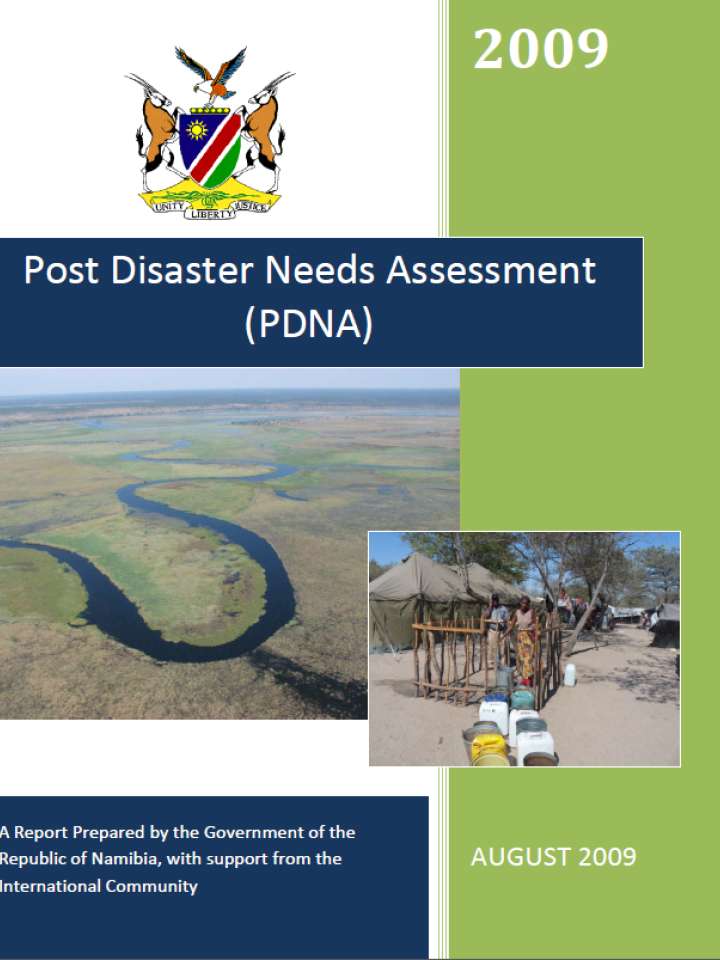Namibia 2009 Floods Post Disaster Needs Assessment
In March 2009, flooding, caused by heavy rainfalls in the region, affected six regions in Northern Namibia (Caprivi, Kavango, Oshana, Oshikoto, Ohangwena, and Omusati). The 2009 flood is the second such event in two years, following three years of successive low-rainfall events. Flood waters surged to near record, overtopping roads and washing out local routes. As a consequence, commercial and industrial activities were disrupted. Local access to hospitals and schools was cut off, urban sewage systems overflowed with the inundation of water supply and sewage stations, and electricity provision was compromised. Overall, the entire economy was disrupted for almost three months and trade routes were severely interrupted.
The floods affected a particularly vulnerable portion of the population; one third of the country’s poor live in the six affected regions. Most live in rural areas, and their income highly dependent on subsistence farming. Many farmers lost the majority of their annual harvest as well as their livestock, jeopardizing their income and food sources. Many rural residents, as well as urban dwellers, lost their homes to the floods; in some cases houses made of mud simply washed away with the floods.
This Post Disaster Needs Assessment (PDNA) assesses the level of damage and losses incurred as a result of the flooding, and to provide a preliminary assessment of recovery and reconstruction options that could provide the affected population with a safer environment in the face of future natural events such as droughts and floods.
Damage was spread among the infrastructure (roads), productive (industry and commerce) and social sectors (housing), (N$ 962.1 million or US$ 118.0 million for these three sectors only representing 86 percent of the total damages), whereas losses were located primarily in three of the four productive sectors (N$ 584.4 or US$ 71.7 million representing 90 percent of the losses. Where the education and health sectors did not sustain damages or losses to the same magnitude of the other sectors, it is important to note that these sectors remain critical lifelines to the most vulnerable populations. Access to health care services, for example, is crucial for populations living with HIV/AIDS; while Namibia’s HIV/AIDS rates have tapered off in recent years, around 17 percent of the population is infected, and many of them rely on health care facilities for survival.
